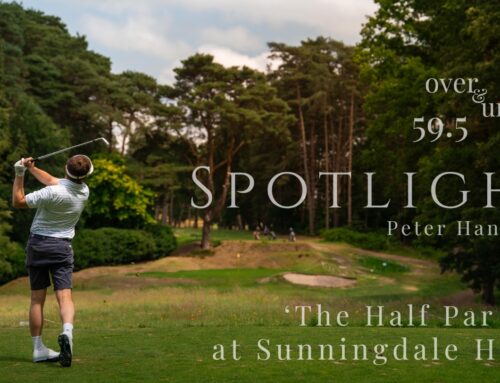#savegolfonthehill
The next episode from our ‘Story of a Golf Club’ series is sad one, but it’s a story we have to tell.
Golf has been played on Cleeve Hill common from as early as 1891, and the course was originally laid down by Old Tom Morris, consisting of dramatic views and blind shots with huge elevation change, but sadly its days are numbered. The layout was symptomatic of the location of the hill; sitting on top of a Limestone escarpment in the Cotswolds, 5 miles north of Cheltenham, and the club owes much to the stone its sits on, giving it the character it enjoys today. The limestone also means the soil drains like a colander, and therefore the ground is springy, and firm removing the need for man-made irrigation. Furthermore, the local area has benefitted hugely from the hill. Quarrying in the early 1900’s produced the famous golden Cotswold stone that so many of the local buildings are constructed from, and it’s this stone that gives the villages throughout the Cotswolds in England the character they are famed for.

It’s also the quarrying on this very hill that perhaps brings some of the greatest character to Cleeve Hill golf course. The back to back par 3’s at 15 & 16 are simply magnificent, played over dramatic gorges on your way in, whilst traversing the west facing side of the hill, and if you play in the afternoon you’ll be able to enjoy a stunning sunset with any luck!
These quarries are littered across the property, with green sites stitched into the hills surrounded by more deep ravines, and its these greens that provide the true wonder of Cleeve Hill. Due to the topography of the land, level greens appear from afar like bookshelves on the escarpment, often framed by walls beyond the green itself, with a perilous chip backwards for golfers who go long with their approach. The course is also possibly the ‘ultimate second shot golf course’, with players of any ability unlikely to lose a ball from the tee. Huge wide and often shared fairways that are maintained by the local greenkeepers (see below) mean the key to a low round is dependent on position and having the right angle from which to attack the complex green sites.

The signature hole at Cleeve Hill is the 13th. A short par 5, playing up to a summit from the tee, which falls away down to the most stunning green complex we have ever witnessed. Located in the foundations of an iron age fort site, it is surrounded by a deep circular wall of mounds, with certain peril for the golfer who attempts the green in 2, often unable to come away with par or worse.
All of these memorable views, green complexes and interesting and its unique routing are why Tom Doak gave the course a 7 out of 10 on his ‘Confidential Scale’. Fans of the Doak scale will know that a 7 is classified as ‘excellent’ and worthy of a ‘long journey to play and experience’, and place it in high esteem among other more famous (and expensive) courses.
All of the history and architecture make this a fascinating place to play golf, but it’s the accessibility of Cleeve Hill that is the biggest reason why it should remain. The local authorities (Tewksbury Borough Council) have deemed golf on the hill as not being financially viable in today’s climate, and with expensive renovations required to the clubhouse, it will close in MAR 2021. At £15 green fees in peak time, it is the epitome of what makes golf special in the UK. Accessible to golfers of any standard both in terms of the set-up of the course and the financial cost, these clubs should be the lifeblood of golf in the UK, and the means by which we will truly grow the game.
The petition to save the course can be found here and we hope that in some small way we may help #savegolfonthehill for future generations!
Clubs in the USA have been saved by some innovative souls and help create some of the most desirable golfing destinations in the world, with places like Goat Hill and Sweetens Cove running completely accessible and fun, low cost golf experiences that rival even the best Tier 1 courses in the land. Could Cleeve Hill be the first to go down that road and provide something totally fresh and exciting to compliment the stunning course….. here’s hoping!
In addition to our film, we have recorded a podcast with JCB golf course architect Robin Hiseman and golf club atlas contributor Sean Arble who both share a very special connection with the course. Please listen to this to understand the subtle intricacies of Cleeve Hill golf course, and share with your friends and wider golfing community!






